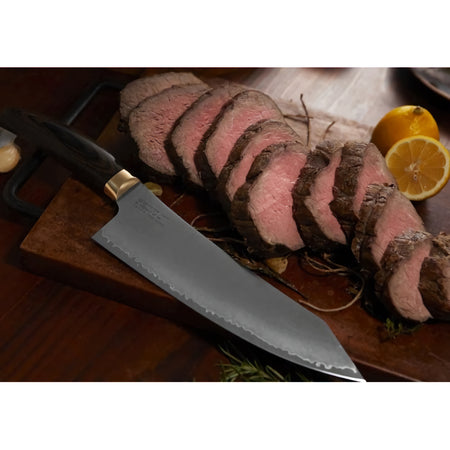Japanese knives are known around the world for their unique sharpness, beauty and durability. Their history dates back hundreds of years to the making of samurai swords, and the tradition still lives strong in the making of modern kitchen knives. One of the most fascinating aspects is Damascus steel , whose wavy pattern makes each knife unique.
Damascus steel – beauty and practicality
Damascus steel has its roots in the Middle East thousands of years ago, but Japanese masters adopted the technique and developed their own version. The process involves combining several different grades of steel, which are forged together in layers. The end result is a knife that has:
-
Excellent sharpness and durability
-
Beautiful, wavy pattern
-
Long service life when properly maintained
A Damascus knife is not just a tool, but also a work of art that reflects the skill of its maker.
Seki City – the heart of Japanese knives
When talking about Japanese knives, you can't miss Seki City . This city in Gifu Prefecture has been a center of traditional swordsmithing since the 13th century.
During the Samurai era, Seki was known for its high-quality katana swords. As the need for swords diminished, blacksmiths transferred their expertise to kitchen knives. Today, Seki City is considered the knife capital of the world , and is home to several prestigious manufacturers.
Seki uniquely combines:
-
Centuries of craft tradition
-
Modern technology
-
International reputation for quality and innovation
Why choose a Japanese Damascus knife?
A Japanese Damascus knife offers much more than just a sharp cutting edge. It is an investment that brings to the kitchen:
-
Precision and enjoyment in cooking
-
Appreciation of traditions and history
-
A beautiful piece of furniture that will last for generations
When you choose a Japanese knife, you choose centuries of skill and tradition – whether it is made in Seki City or other renowned knife centers in Japan.


